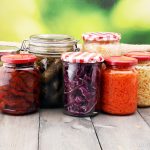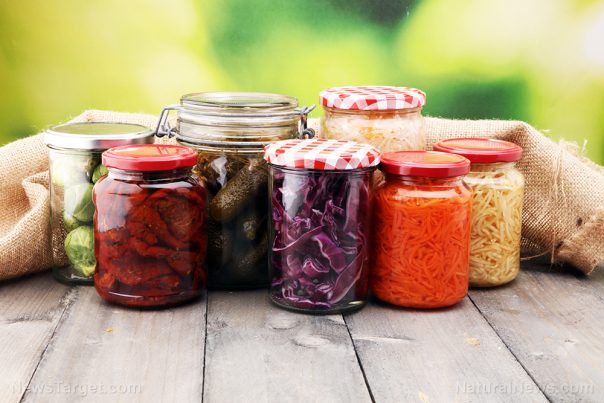
“Wartime Homefront Essential Skills” on BrightU: The most effective ways to preserve your food
Tuesday, April 29, 2025 by Jacob Thomas
http://www.naturalnewstips.com/2025-04-29-the-most-effective-ways-preserve-your-food.html

- In episode 2 of “Wartime Homefront Essential Skills,” Marjory Wildcraft and Jill Winger discussed low-tech food preservation techniques like smoking, fermenting and salt-curing — proven effective even without modern appliances. Smokehouses deter insects, while fermented foods (like four-year-old cabbage) remain edible.
- This episode explored techniques like burying salt-cured meats in hay bales, preserving food for months. Sweet potatoes and carrots were found fresh months later.
- Wildcraft and Winger explained how solar dryers and homemade powders (e.g., tomato, mushroom) reduce bulk and spoilage. Screen drying herbs and solar dryer designs work even in humid or rainy climates.
- Both experts warn against energy-dependent tools like freeze-driers, advocating instead for simpler, ancestral methods (smoking, fermenting) for true self-sufficiency.
In episode 2 of “Wartime Homefront Essential Skills,” aired April 27, Marjory Wildcraft, renowned homesteading expert and founder of The Grow Network, and Jill Winger shared decades of hands-on experience uncovered startlingly simple ways to store food without relying on modern appliances. From smokehouses that repel insects in sweltering climates to salt-cured meats buried in hay bales mimicking nature’s refrigeration, these techniques defy conventional wisdom. When the grid fails, freezers become useless — but ancient preservation methods can keep protein safe to eat for years.
“Smoke is a deterrent to insects,” explained Wildcraft, recounting her father-in-law’s South Texas smokehouse, where meat stayed preserved all summer despite extreme heat. By rekindling a smoky fire every few days, the method dehydrates meat and wards off pests — a trick rooted in indigenous practices. “I’ve seen snakes flee from smoke,” Wildcraft added, tying the tradition to its practical origins.
Wildcraft’s four-year-old fermented cabbage, stored in a Texas pantry with no refrigeration is one of the most shocking revelations. “It was mushy — but I ate it, and it was fine,” she said. Both Wildcraft and Winger agreed that fermentation is undervalued for its longevity and probiotic benefits — especially in humid climates where refrigeration is unreliable.
A pantry full of home-preserved food is better insurance than any policy
Buried in hay bales or stored in root cellars, salt-cured meats and in-ground vegetables mimic pre-industrial techniques. Wildcraft shared how Texas neighbors preserved sweet potatoes in pits lined with hay, “By spring, the sprouts became next year’s crop.” Winger added, “We dug up forgotten carrots in April — still crisp!”
Beyond dehydrators, solar dryers and powders (like tomato or mushroom) emerged as space-saving staples. “Homemade tomato powder reconstitutes into sauce — no more moldy paste cans,” said Winger. Wildcraft championed low-tech screen drying for herbs and seeds, while a solar dryer design from Appalachian State University proved effective even in rainy climates.
Both experts cautioned against over-reliance on gadgets. “Freeze-drying is fantastic, but it’s energy-intensive,” noted Wildcraft, while Winger admitted, “I’m trying to homestead simpler, like our grandparents did.” Their advice? Prioritize time-tested methods — smoking, fermenting and burying — over fragile technology.
As Wildcraft concluded, “A pantry full of home-preserved food is better insurance than any policy.” For those willing to learn, the past holds the key to resilience.
Want to learn more?
When the world gets unpredictable, the smartest move is to prepare. That’s why “Wartime Homefront Essential Skills” by Marjory Wildcraft is back on BrightU. This is your second chance to catch the series that’s changing how families think about self-reliance.
If you want to learn at your own pace and get access to 12 additional bonuses, you can purchase the Wartime Homefront Essential Skills Bundle here. Upon purchase, you will get unlimited access to all 10 “Wartime Homefront Essential Skills” videos and 12 bonuses, including 10 eBook guides and two homesteading videos.
Tagged Under: Tags: ancient techniques, dehydrating food, emergency preparedness, fermentation, Food Preservation, Food storage, homesteading, Marjory Wildcraft, natural refrigeration, Off Grid living, root cellars, salt-curing, self sufficiency, smokehouses, smoking meat, solar drying, survival food, sustainable living, wartime homefront essential skills
RECENT ARTICLES


3 Luxurious DIY skincare recipes using Organic Coconut Oil and Frankincense Oil
By HRS Editors

Avoiding insurance scams: Tips every prepper and consumer needs to know
By Zoey Sky

Millet: The ancient superfood making a modern comeback
By Laura Harris

Vacuum sealers: The budget-friendly secret to cutting grocery bills and prepping for emergencies
By Zoey Sky
COPYRIGHT © 2017 NATURAL NEWS TIPS


